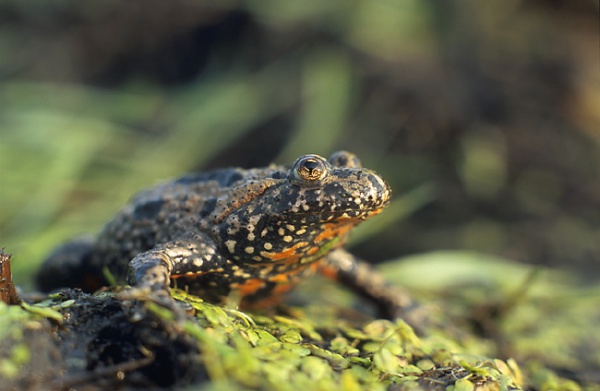Facts About European fire-bellied toad
The European fire-bellied toad, known by various names such as the ringing frog, fiery toad, fire frog, or firebelly toad, is a striking amphibian native to mainland Europe. These toads are easily recognizable by their vibrant lime green dorsal coloration, accented with black spots, and their eye-catching orange to red bellies adorned with black bars and stripes. They are the largest members of the Bombina genus and generally exhibit a darker hue compared to their Asian relatives.
Adult European fire-bellied toads typically measure between 26 and 60 mm in length and weigh between 2 and 13.9 grams. They possess a flattened body shape, and their skin is dotted with low tubercles topped with black spines. Their hind feet are well-developed and webbed. As a defense mechanism, their skin secretes a mild toxin. The tadpoles are brownish with pale bands running along their backs.
Their diet consists mainly of insects, spiders, millipedes, mollusks, and earthworms, while the tadpoles feed on algae, bacteria, and plankton. When faced with danger, these toads display their vivid belly colors as a warning to potential predators. The breeding season spans from April to July or August. During this time, males develop special pads on their forelegs to help them hold onto females during mating. Females lay clusters of 10 to 40 eggs on plants, and the tadpoles hatch within 2 to 5 days, transforming into toads after 5 to 12 weeks.
European fire-bellied toads can live for more than 10 years and are known for their loud, melodic calls during the breeding season. They hibernate on land in frost-resistant shelters. One of their unique behaviors includes shedding their skin and then eating it to gain additional nutrients.

 Slovakia
Slovakia